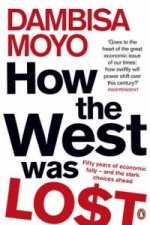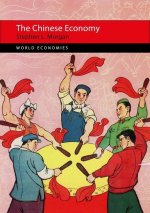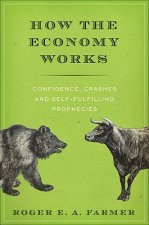
Kód: 07175758
Japan's Industrious Revolution
Autor Akira Hayami
This book explains in fascinating detail how the fruits of the Industrious Revolution are what have supported Japan since the eighteenth century, improving living standards and leading to the formation of the work ethic of modern ... celý popis
- Jazyk:
 Angličtina
Angličtina - Väzba: Pevná
- Počet strán: 130
Nakladateľ: Springer Verlag, Japan, 2015
- Viac informácií o knihe

70.71 €

Skladom u dodávateľa v malom množstve
Odosielame za 12 - 15 dní
Potrebujete viac kusov?Ak máte záujem o viac kusov, preverte, prosím, najprv dostupnosť titulu na našej zákazníckej podpore.
Pridať medzi želanie
Mohlo by sa vám tiež páčiť
-

Business Vocabulary in Use Third Edition
36.17 € -

Fairy Tale
32.29 € -

Deadpool: Samurai, Vol. 2
10.21 € -13 % -

How to Draw: Harry Potter
18.69 € -13 % -

Ten Thousand Apologies
24.82 € -13 % -

Lonely Planet Under the Stars - Europe
22.58 € -14 % -

Assassin's Quest
49.15 € -13 % -

I'm Rather...Fond of You.
20.43 € -5 % -

GMAT Foundations of Math: 900+ Practice Problems in Book and Online
34.53 € -

Katanagatari 2
25.85 € -17 % -

Nightlights
10.62 € -15 % -

On the Shoulders of Giants: LotFP Compatible
12.76 € -

Royal Assassin
10.93 € -24 % -

Maritime Security and the Law of the Sea
252.22 € -

RHS Botany for Gardeners
18.28 € -24 % -

Question of Honor
17.87 € -8 % -

Problem With Forever
9.70 € -19 % -

Germinal
10.31 € -17 % -

Gentle Discipline
19 € -2 % -

Collection Assessment in Music Libraries
73.06 € -

Codes
280.74 €
Darujte túto knihu ešte dnes
- Objednajte knihu a vyberte Zaslať ako darček.
- Obratom obdržíte darovací poukaz na knihu, ktorý môžete ihneď odovzdať obdarovanému.
- Knihu zašleme na adresu obdarovaného, o nič sa nestaráte.
Viac informácií o knihe Japan's Industrious Revolution
Nákupom získate 175 bodov
 Anotácia knihy
Anotácia knihy
This book explains in fascinating detail how the fruits of the Industrious Revolution are what have supported Japan since the eighteenth century, improving living standards and leading to the formation of the work ethic of modern Japan.§§The arrival of the Sengoku Period in the sixteenth century saw the emergence and domination of government by the warrior class. It was Tokugawa Ieyasu who unified the realm. Yet this unity did not give rise to an autocratic state, as the shogun was recognized merely as a main pillar of the warrior class.§§Economically, however, from the fourteenth century, currency payments for sh en nengu (taxes paid to the proprietor) became standard, and currency circulation began, primarily in the central region. Under Tokugawa rule, organized domestic coinage of currency began, opening the way to establishing a national economic society. Also, agricultural land was surveyed through cadastral surveys known as kenchi . Land values were converted in terms of rice, so the expected rice yields for each village were assessed, and the lords used this as a benchmark for imposing taxes.§§In the sixteenth and seventeenth centuries, Japan experienced a great transition, and conditions for peasants, agriculture, and farming villages underwent great changes. Inefficient traditional agriculture using peasants in a state of servitude was transformed into highly efficient small-sized farming operations which relied on family labor. As production yields increased due to labor-intensive agriculture, the profits obtained by the peasants improved their living standards. The stem-family system became the norm through which work ethics and even literacy were transmitted. This very change was the result of the industrious revolution in Japan.§§The book thus presents the framework of the facts of pre-industrial Japanese history and depicts pre-modern Japan from a macroscopic point of view, showing how the industrious revolution came about. It is certain to be of great interest to economists and historians alike.§
 Parametre knihy
Parametre knihy
Zaradenie knihy Knihy po anglicky Economics, finance, business & management Economics Economic history
70.71 €
- Celý názov: Japan's Industrious Revolution
- Podnázov: Economic and Social Transformations in the Early Modern Period
- Autor: Akira Hayami
- Jazyk:
 Angličtina
Angličtina - Väzba: Pevná
- Počet strán: 130
- EAN: 9784431551416
- ISBN: 4431551417
- ID: 07175758
- Nakladateľ: Springer Verlag, Japan
- Hmotnosť: 3554 g
- Rozmery: 235 × 155 × 243 mm
- Dátum vydania: 19. May 2015
Obľúbené z iného súdka
-

Why Nations Fail
16.34 € -8 % -

Why Nations Fail
29.01 € -15 % -

Global Economic History: A Very Short Introduction
10.11 € -22 % -

Monetary History of the United States, 1867-1960
72.86 € -

Fifty Things that Made the Modern Economy
11.64 € -19 % -

Long Twentieth Century
24.72 € -21 % -

Wall Street and FDR
14.40 € -23 % -

Debt
21.86 € -22 % -

Capital in the Twenty-First Century
23.39 € -7 % -

The Wisdom of Crowds
16.24 € -14 % -

Money Changes Everything
22.78 € -

Capital in the Twenty-First Century
19.31 € -36 % -

Exorbitant Privilege
12.25 € -23 % -

Extraordinary Popular Delusions and the Madness of Crowds (Harriman Definitive Editions)
32.69 € -23 % -

Power of Gold
19.61 € -18 % -

Capitalism without Capital
16.34 € -19 % -

Wall Street Trilogy
37.19 € -

Capitalism in America
13.68 € -23 % -

Progress and Poverty
21.45 € -23 % -

Capitalism without Capital
43.73 € -11 % -

Concise Economic History of the World
195.50 € -

World in Depression, 1929-1939
38.21 € -

Great Crash 1929
14.20 € -23 % -

Double Entry
17.47 € -4 % -

Japanese Economy
43.53 € -

Grand Pursuit
18.28 € -6 % -

Commercial Revolution of the Middle Ages, 950-1350
33.41 € -

How The West Was Lost
12.25 € -23 % -

Chinese Economy
43.53 € -

Indian Economy
49.05 € -

Anxious Triumph
53.34 € -9 % -

Dark Towers
12.25 € -23 % -

World Order - Our Secret Rulers
29.01 € -

New Economic History of Argentina
79.71 € -

Russian Economy
37.80 € -

Die Deutsche Mark
25.95 € -4 % -

Elgar Companion to Neo-Schumpeterian Economics
76.84 € -10 % -

Suppressed History of American Banking
16.55 € -4 % -

American Enterprise
29.42 € -5 % -

Markets in the Name of Socialism
53.65 € -

Mind and the Market
19.20 € -5 % -

WHAT WOULD THE GREAT ECONOMISTS DO
23.50 € -

French Economy
32.80 € -

Fifty Things that Made the Modern Economy
25.23 € -

Marketplace of Revolution
22.27 € -4 % -

Bourgeois Dignity
22.07 € -7 % -

Money
25.85 € -1 % -

Hostile Money
34.53 € -2 % -

How the Economy Works
26.56 € -13 %
Osobný odber Bratislava a 2642 dalších
Copyright ©2008-24 najlacnejsie-knihy.sk Všetky práva vyhradenéSúkromieCookies


 21 miliónov titulov
21 miliónov titulov Vrátenie do mesiaca
Vrátenie do mesiaca 02/210 210 99 (8-15.30h)
02/210 210 99 (8-15.30h)